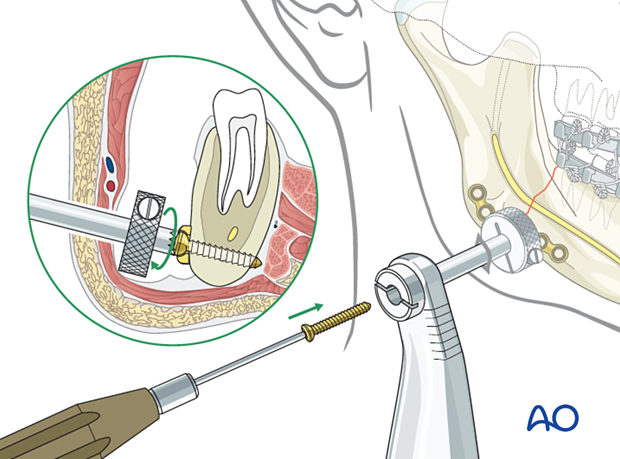The transbuccal system
1. Principles
General considerations
Transbuccal instrumentation extends the versatility of transoral approaches.
Drilling and screw insertion can be performed at a right angle to the lateral mandibular surface through a transbuccal approach while having a direct vision of the surgical field transorally.
The technique allows for less soft tissue retraction when operating in the posterior mandible.
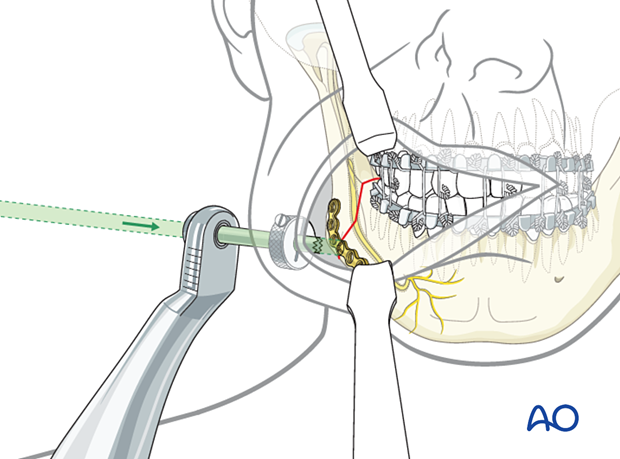
AO Teaching video
AO Teaching Video "The Transbuccal System"
2. Transbuccal system
Transbuccal guide
The transbuccal system's main component is the handle, equipped with either a removable (as illustrated) or permanently fixed cannula. The trocar (also known as obturator) is used to penetrate the soft tissues with a pointed tip.
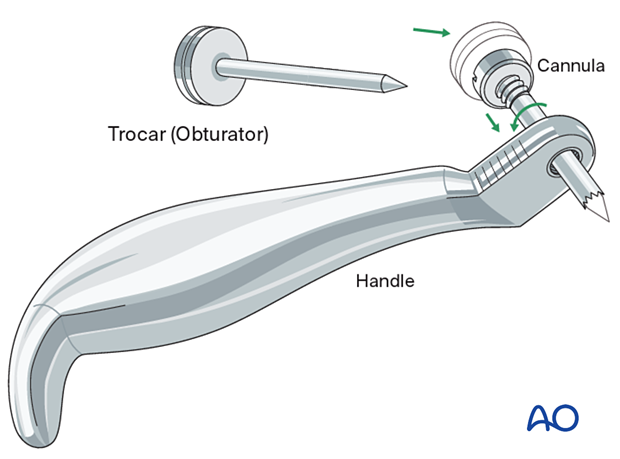
Mountable retractors
The cannula is mounted through the transoral route with a self-retaining retractor for the buccal soft tissues.
There are several retractor types available used at the surgeon's preference such as:
- Blade retractor (fixed with a screw to the cannula shaft)
- U-shaped retractor (fixed externally to the handle)
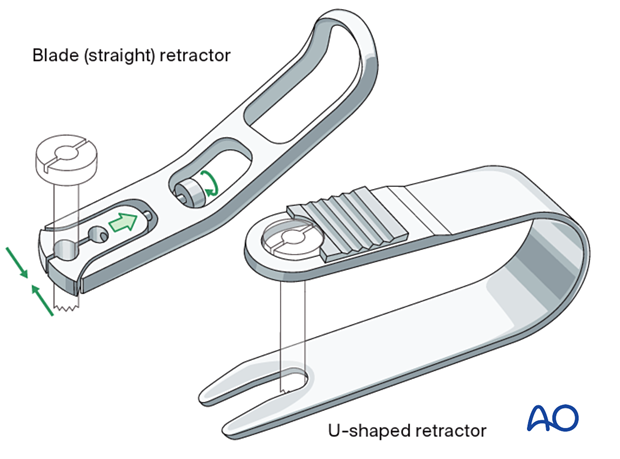
- Ring-shaped retractor (fixed with a screw to the cannula shaft)
- Forceps retractor (fixed to the cannula shaft)
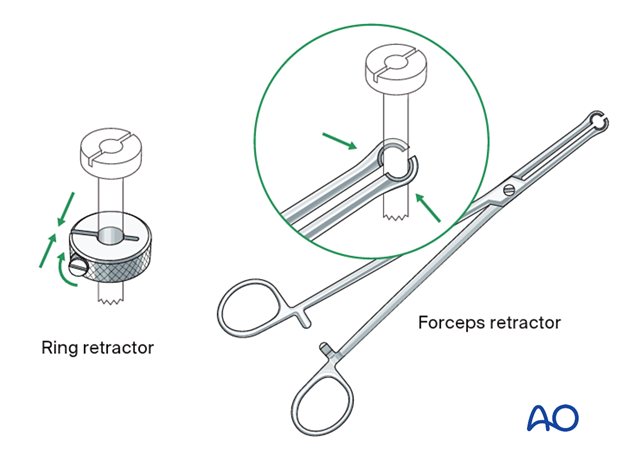
Drill sleeves
For accurate drilling, a set of exchangeable drill sleeve inserts is available with varying inner diameters.
Some drill sleeves offer the possibility to connect to a plate hole, thus facilitating plate positioning.
Some of the drill sleeves' side windows allow for visualization of the drilling or screw insertion as well as provide a port for direct irrigation.
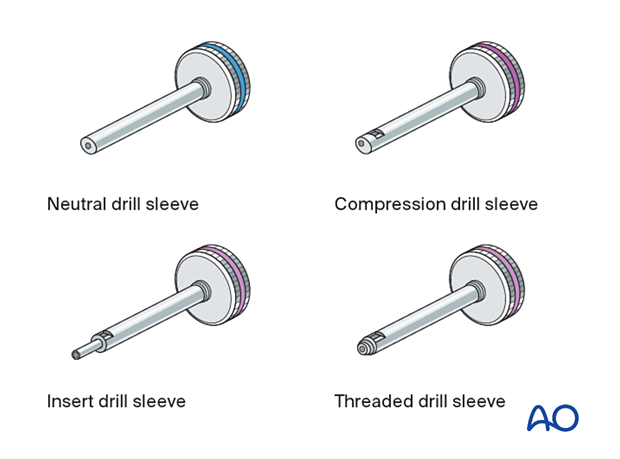
3. Insertion of transbuccal instrument
Make stab incision
Make a small stab incision to prepare for the insertion of the cannula. The location is predetermined by palpation. Place the index finger over the desired osteosynthesis site and match it with the thumb on the cheek surface. Mark the incision site and make a small stab incision to prepare for the insertion of the cannula.
The orientation of the scalpel blade must be parallel to the relaxed skin tension lines (RSTL).
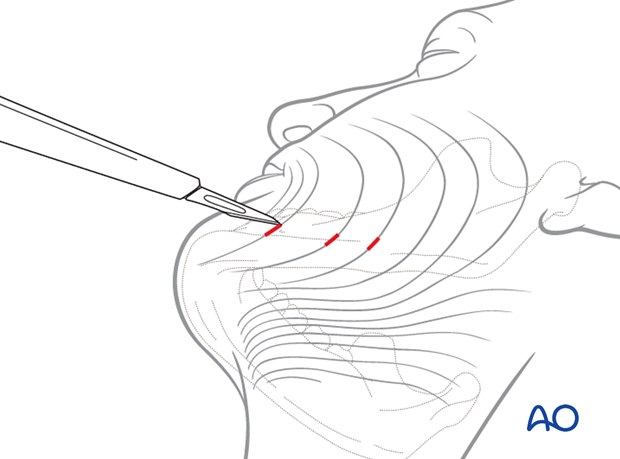
Insert the cannula with trocar through the facial tissue down to the bone.
Care should be taken while inserting the cannula as it may puncture and injure the operator's fingers.
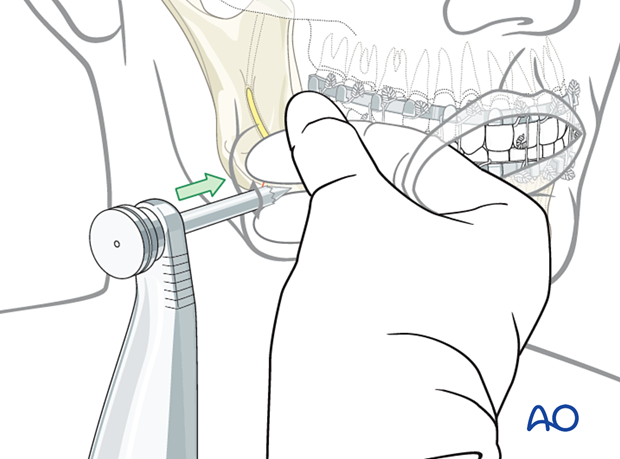
Remove the trocar to open the cannula as a channel for drilling and screw insertion.
Keep the trocar in place as it may slip out easily. Recannulation may sometimes be difficult and may even require the use of the trochar again.
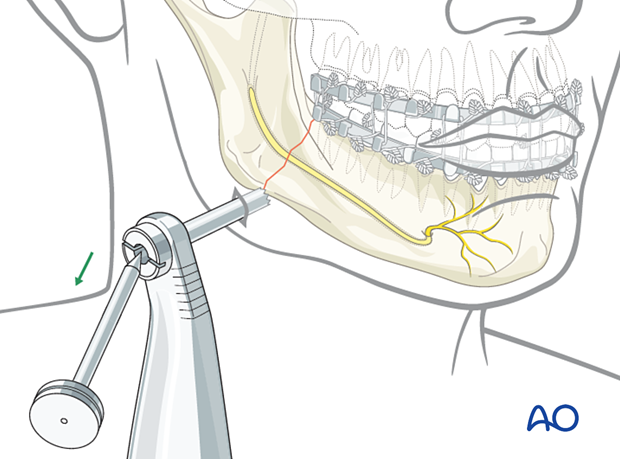
4. Cheek retractor options
Ring
Angle the tip of the cannula slightly anteriorly and place the cheek retractor ring over the cannula tip.
Use a screwdriver (2.0 or 2.4) to tighten the screw until the ring is secured to the cannula.
The cheek soft tissues can now be retracted using the outside handle.
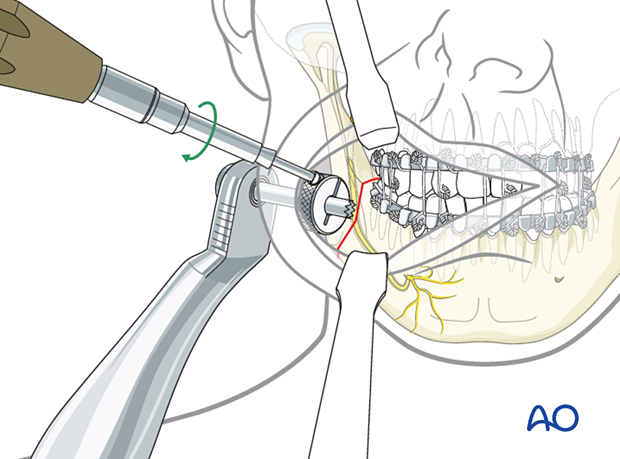
Straight cheek retractor
Place the blade-shaped cheek retractor over the forward-tilted cannula tip.
Tighten the blade fixation screw.
The cheek soft tissues can now be retracted.
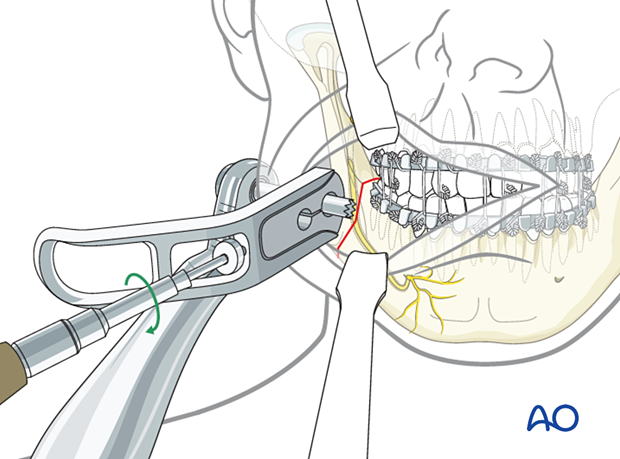
U-shaped
Start applying the U-shaped cheek retractor by placing the forked inner end of the retractor around the cannula intraorally.
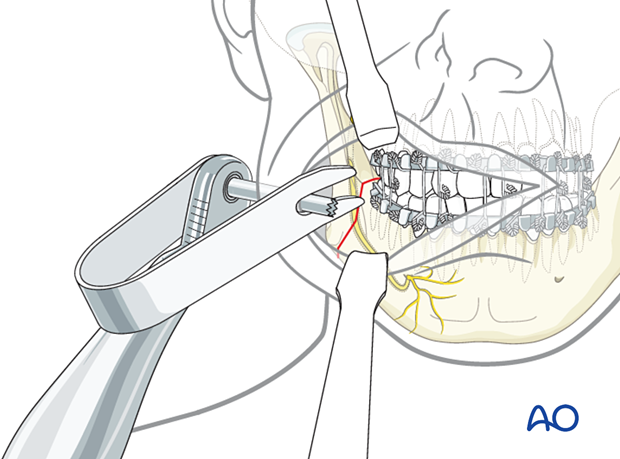
Place the outer end over the cannula disk at the handle.
The handle and the U-shaped retractor can be hinged around a ratchet joint on the outer cannula end. The handle is brought into a comfortable working position.
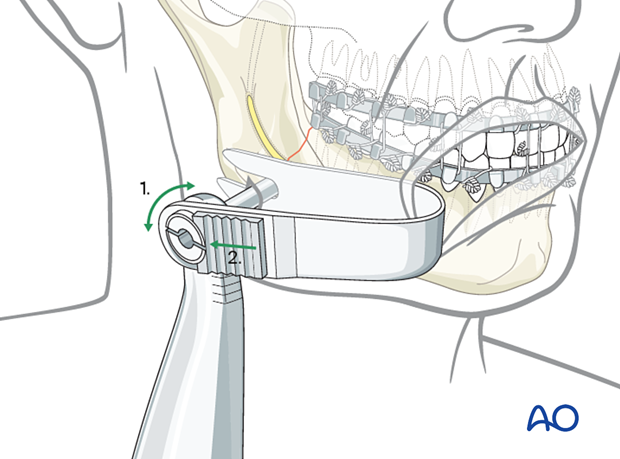
Clamp
Place the forceps cheek retractor next to the cannula tip, which is tilted forward. Then open the beak-shaped forceps mouth and grip the cannula tip. Adjust it to the appropriate height and close the forceps using its ratcheting mechanism.
Retraction of the cheek soft tissues using the forceps handle allows simultaneous viewing and handling of the cannula tip inside the transoral surgical cavity.
The cheek soft tissues can also be retracted using the external handle. However, viewing and handling are then separated by the cheek tissues. Switching of the view between inside and outside will be required.
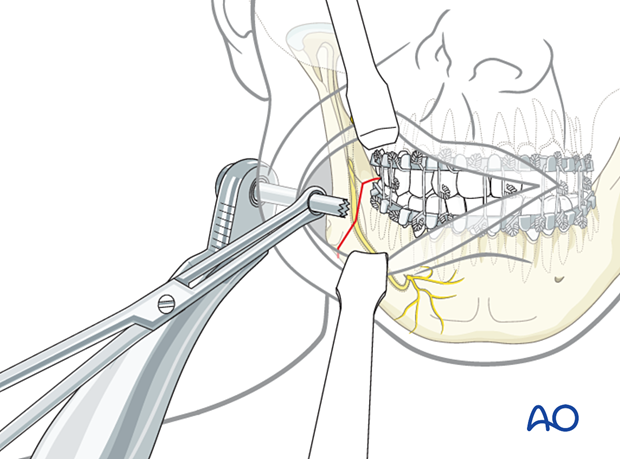
5. Screw insertion
Insert drill guide
Next, an appropriate drill guide is chosen and inserted into the cannula.
The below screw insertion is demonstrated using the ring cheek retractor.
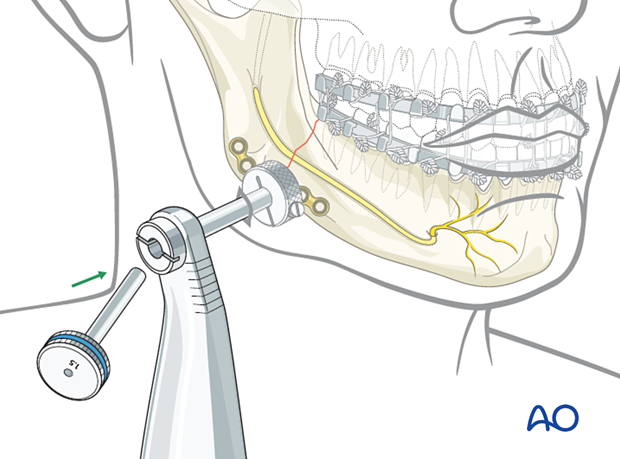
Drill hole
The cannula's tip containing the drill guide is placed precisely at the intended screw position directly on the bony surface or onto the hole of an osteosynthesis plate.
Drill a hole using the appropriate drill guide and drill bit. The drill bit's advancement into the bone cannot be directly observed unless a drill sleeve with a window is used or the cannula is retracted slightly.
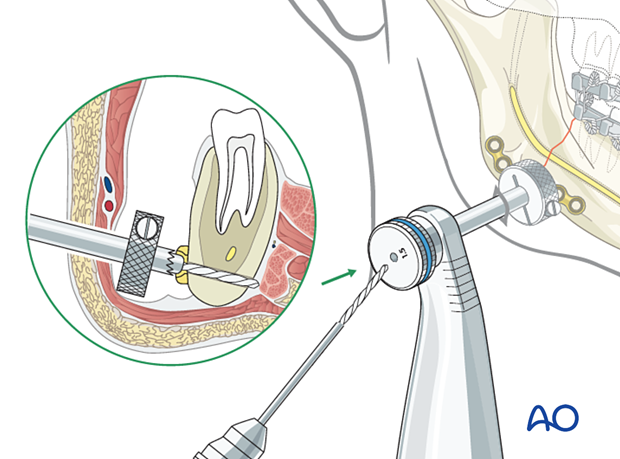
Determine screw length
The appropriate screw length is determined with a depth gauge, and the screw is inserted using a self-holding screwdriver.
Note: the drill guide must be removed before the depth gauge is inserted.
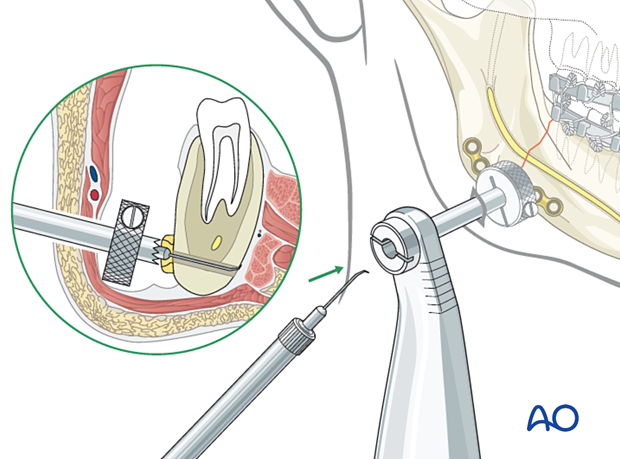
Screw insertion
Mount the screw on the self-retaining screwdriver and introduce the screw into the cannula in the cannula hole axis.
Unless securely seated to the screwdriver blade, the screw can easily become detached from the screwdriver.
After screw purchase has been obtained, the cannula can be slightly retracted to observe the further progress of screw insertion.
The transbuccal system is dismantled after all screws have been inserted.
A simple suture is usually sufficient to close the stab incision. Alternately, a small adhesive tape suffices. The stab wound heals rapidly with minimal to no scarring.
